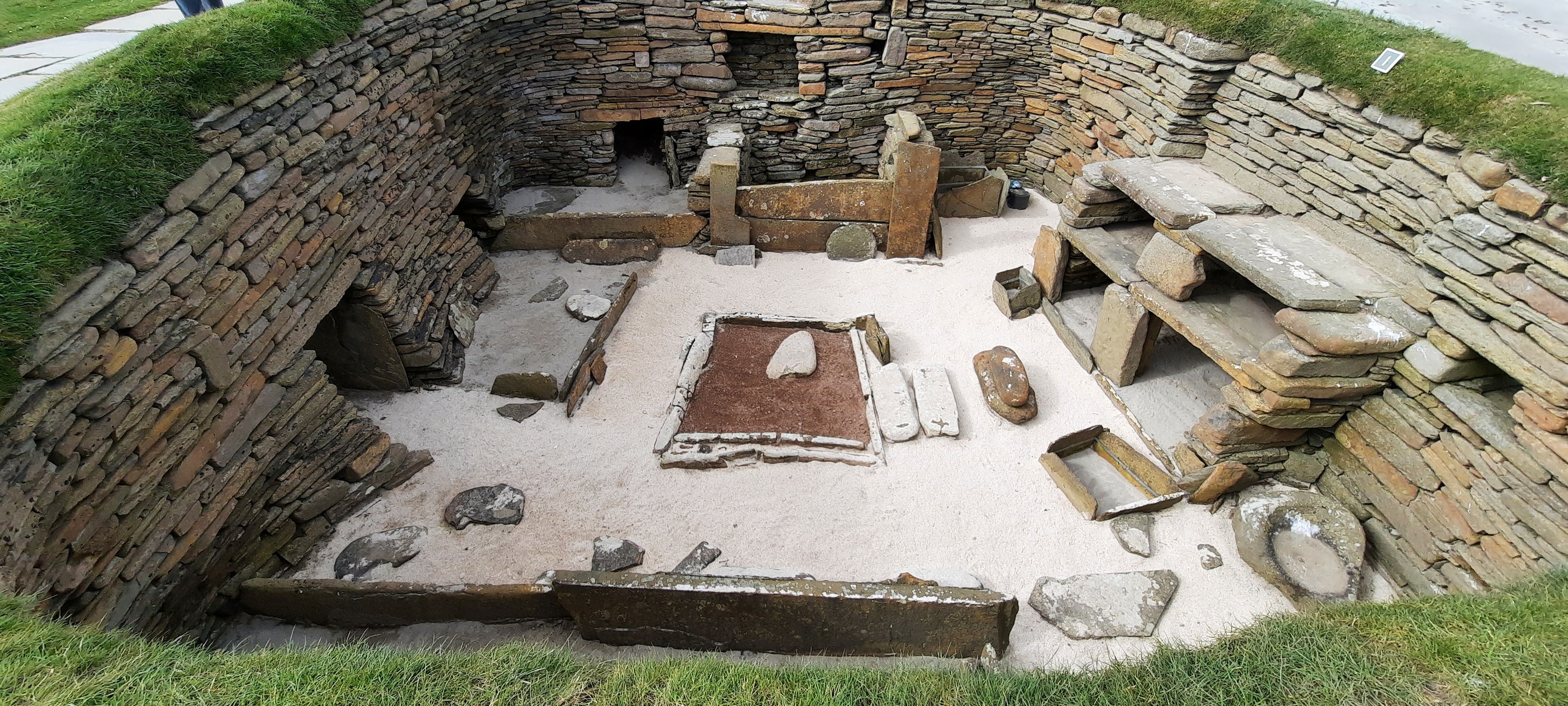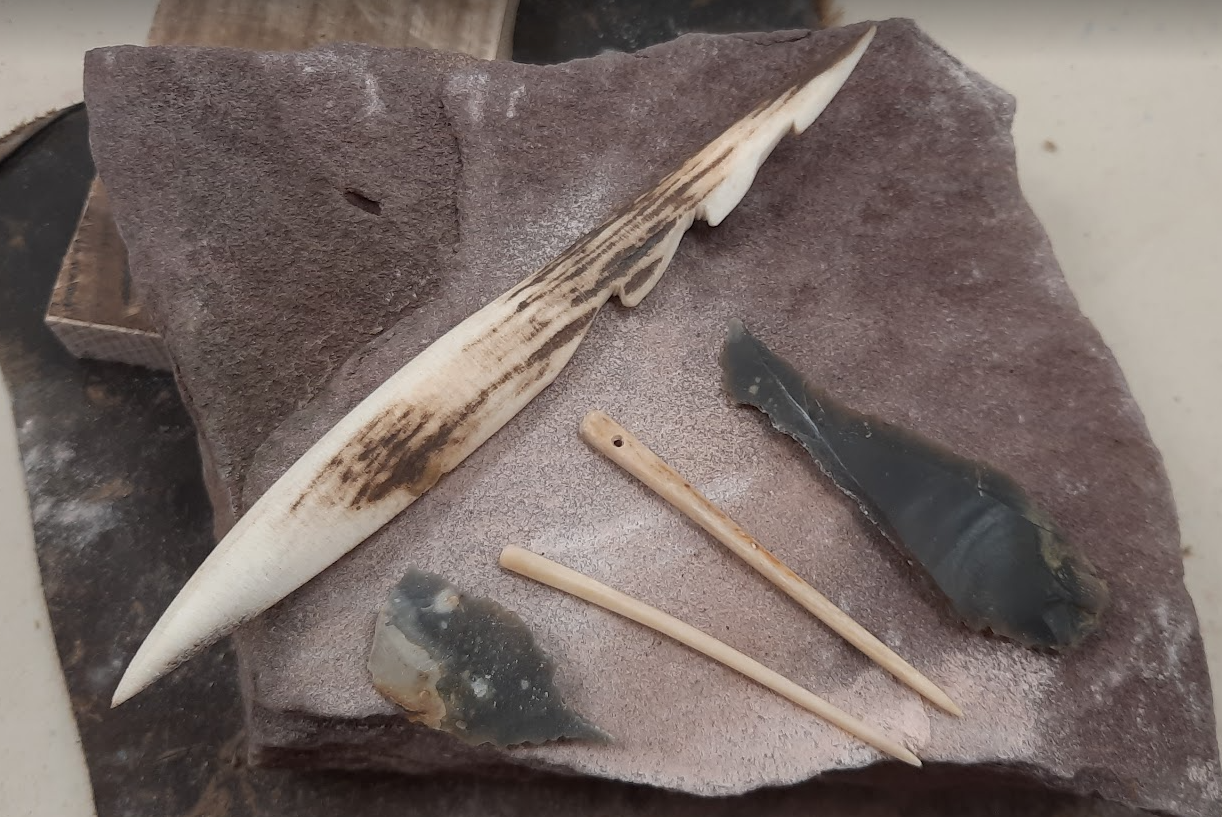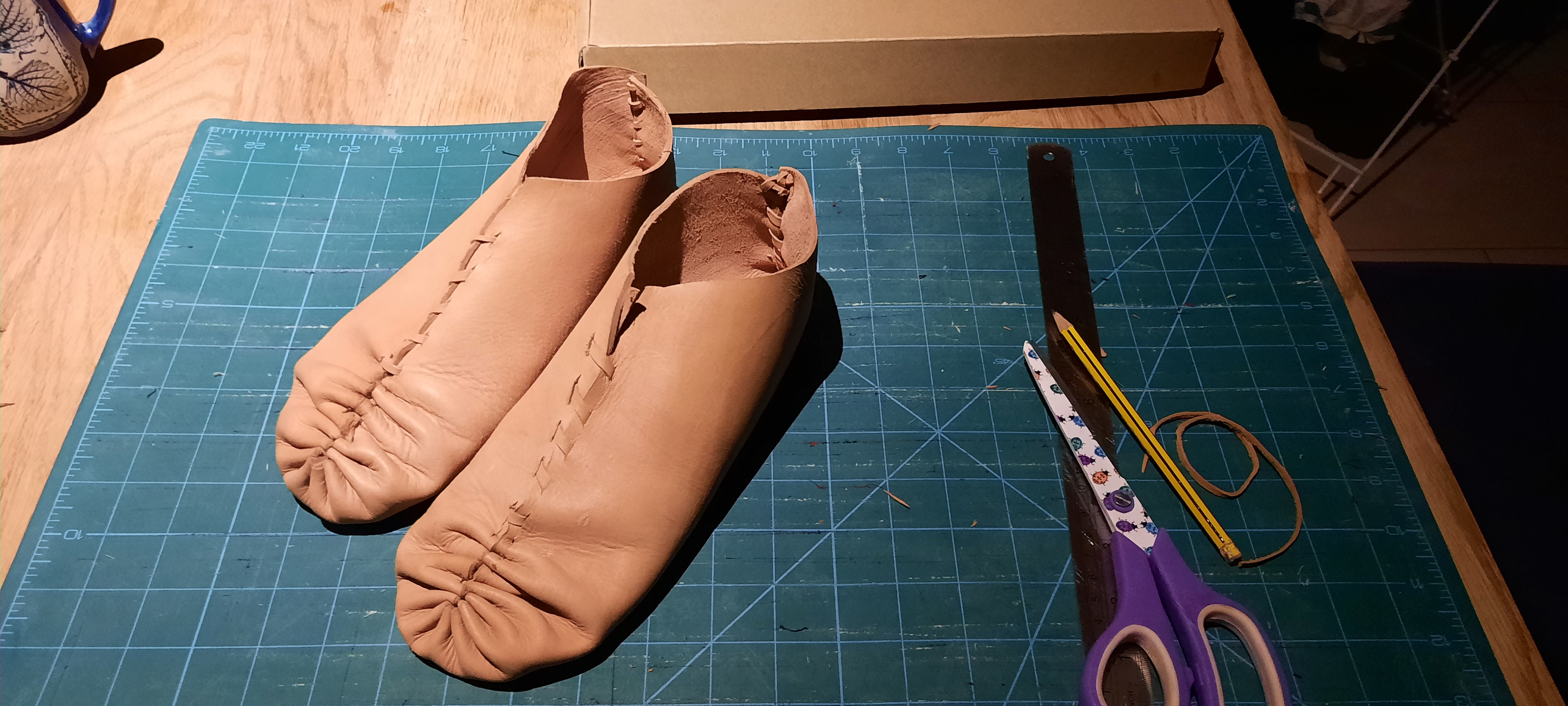Illustrating Stone Age Life
- HBuchan's Blog
- Log in to post comments
I have been interested in prehistory for a long time and as an educator and a provider of school workshops decided it was time to combine these aspects and embark on a new project – a Stone Age workshop exploring life back then and the changes through the Palaeolithic to the Neolithic. So currently I am working on creating a set of artefacts to illustrate Stone Age life, as we currently understand it, based on archaeological evidence (mainly from Northern Europe) with resources that can be handled by children and are made (as far as I can) using time appropriate techniques.
In May, I went to Orkney to visit the some of the Neolithic sites (Skara Brae, Ring of Brodgar, and the Broch of Gurness). It was great to see the actual artefacts and monuments as well as the replicas on display to give a taste of what life would have been like back then. I always find myself trying to imagine how things were used, especially when objects have an unknown use. For anyone who hasn’t been, I would thoroughly recommend going there.

After thinking about how I wanted to illustrate life in the Stone Age, I decided I would create a variety of artefacts and they would need to represent the different parts of life and of that Age – clothing, shoes, baskets, nets, looped baskets, personal ornamentation, antler tools, bone needles, cordage from bast fibres (both nettle and lime), pigments and Stone Age art, pottery, bark containers, birch glue. My thought was that, through their creation, I would gain an understanding of that process and how the tools were used.

The starting point was researching stone age sites, the differences between the Palaeolithic, Mesolithic and Neolithic as well as timelines for Britain and Europe. I used a variety of books (The Human Past, Prehistoric Europe, Everyday Life in the Ice Age to name but a few) and a variety of websites for general background information before narrowing my research, one craft at a time. At the end of May, I came across Sally Pointer’s brilliant videos on YouTube and the ones on looping, netting, and nettle cordage were very clear and easy to follow, which was just what I needed. At the same time, I booked myself on the Ancient Crafts personal ornamentation and carving workshops. These turned out to be immensely helpful in getting started in those crafts that I was learning from scratch, as well as fostering the experimental archaeology mindset of experimenting with the available tools. I had such fun at the workshops, and they gave a real understanding on the amount of work needed as well as the efficiency of stone tools.
Next, I visited Creswell Crags for the Ancient Craft workshops, and to go to the caves to see the art. Although some of it was hard to see, and the light needed to be just right, it was amazing to think that 12,000 years ago a person was in that same spot carving a picture into the cave wall and possibly painting it afterwards.

The first artefact I made was a pair of shoes. Whilst researching I looked for evidence of shoes, how they seemed to have been created, and the materials that were available at the time. From there, I could make a pattern and adapt a prototype to make a shoe that fit. Having done the process of researching and adapting I could finally make the shoes, though I still needed to adapt the final artefact so that it had a comfortable fit, before soaking them and having a finished item. The shoes were surprisingly easy to make once I had decided what they should look like, as I have experience with leatherwork, just not making shoes.

Other items were more ambiguous, with evidence that needed more interpretation as less of the whole has survived. For example, with the netting only a small fragment survived making it hard to know what shape the net had originally been.
This has been (and still is, as I have not yet finished) a lot of fun. As well as deepening my understanding about the Stone Age, I find that learning new techniques is always exciting and to be recommended. Creating objects in new ways often brings up so many questions that are interesting to explore and discuss - Who would have done this task/craft? What would you need to carry with you if you were travelling to have the resources needed for daily life? Creating artefacts also brings new ways of understanding how materials work as well as the time, pit falls and prior knowledge that were needed to originally create an object. It certainly makes one think about how these crafts would have been carried out and gives a different perspective on the way things are done now so quickly as opposed to taking time and putting in lots of effort into something and how that investment colours the artefact itself.
One of the biggest challenges for me in this project was finding the specific information needed in the sea of knowledge that is out there. It is hard to find something when you don’t know what you are looking for, if you don’t know that there is a preserved prehistoric shoe found in Armenia, how do you find the specifications to make a Stone Age shoe? I often felt like I needed a guide to the Stone Age to find the information I was seeking. There are some great images of carinated pottery, but it was hard, as someone new to this field, to find the reports that had the dimensions to go with the pots. Also, there is the issue that sometimes the reason I couldn’t find the information is that we just might not know the answer, as not enough of the evidence has survived. In which case, I had to see if there was a plausible interpretation to use instead. Which is, I suppose, the issue that all archaeologists, reenactors, and curators will have when dealing with prehistory.
Written by Helen Buchanan
